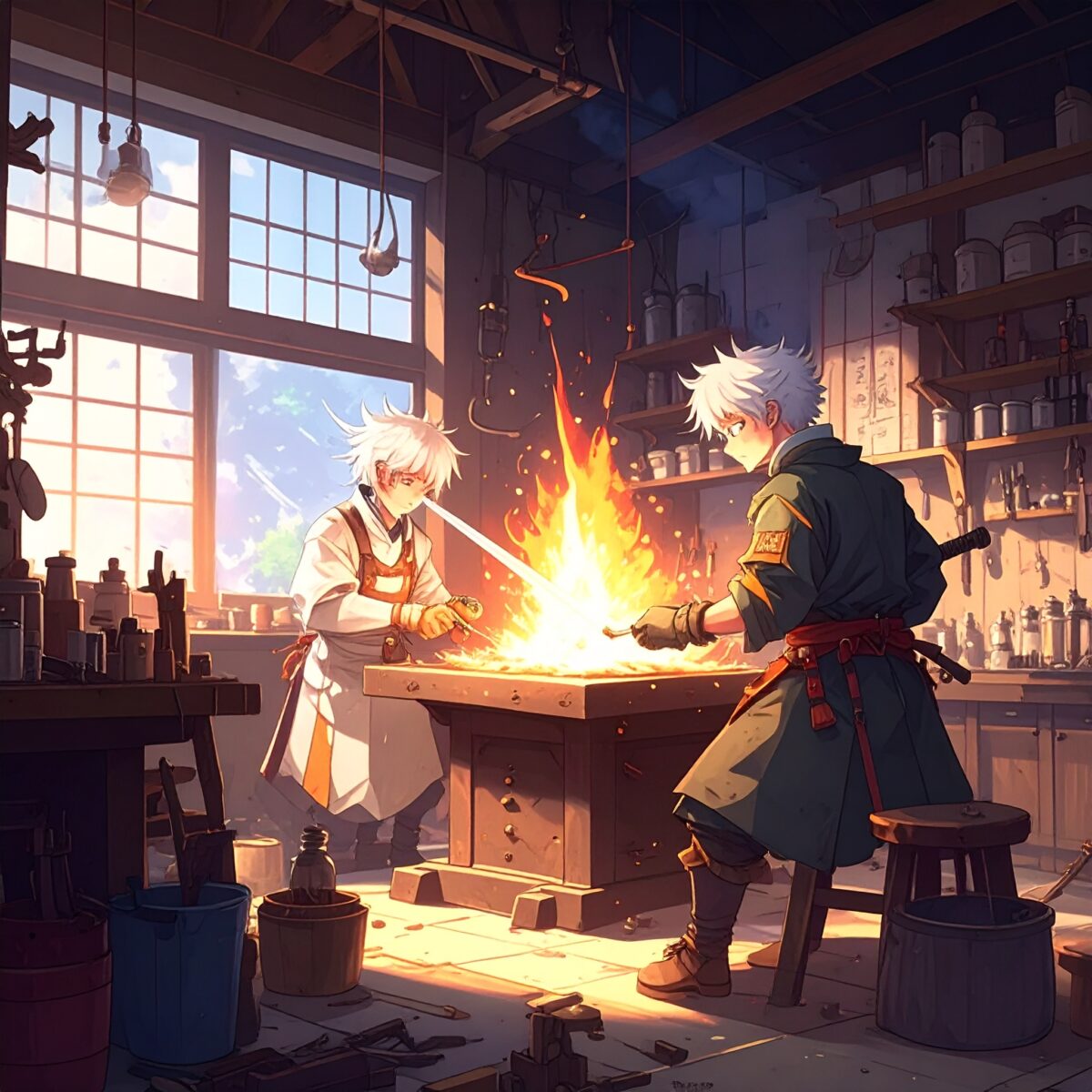A Japanese sword is far more than a weapon. Its shape, light, sound, and weight all embody the soul of the craftsman and the accumulation of time and skill. While samurai dramas and museum displays offer a glimpse of these iconic blades, few people ever witness the moment when steel meets flame and is forged into life. Joining a swordsmithing workshop tour allows you to witness fragments of this extraordinary process firsthand. In the quiet mountain villages where hammers echo and sparks fly, Japan’s deep-rooted power of craftsmanship comes alive.
Though swordsmiths are few, their forges can still be found across Japan—and some are open to visitors. During these guided tours, you can observe the process up close while listening to the artisan’s explanations. Red-hot steel is hammered, folded, and reforged by teams of craftsmen working in unison. Through these repeated steps, the blade gains its remarkable combination of strength and flexibility. Watching sparks dance and iron glow just a few meters away is an awe-inspiring, unforgettable experience.
The intense heat of the forge, the efficiency of every motion—everything is sustained by years of experience and unwavering focus. Words are few; communication flows through breath and movement. In this atmosphere of quiet precision, swords are born—not just as objects, but as expressions of discipline, resilience, and Japanese spirit. Seeing this process reveals the deeper meaning of monozukuri (craftsmanship) in Japanese culture.
Some forges also offer hands-on experiences, allowing visitors to take part in select stages of the process. You might help hammer heated metal or try your hand at polishing a small blade or paper knife. In the moment when the weight, heat, and vibration of the steel reach your hands, you’ll feel your body becoming part of the creation itself—a rare connection between maker and material.

These tours not only offer a dramatic view of the forging process, but also provide detailed explanations of the sword’s structure, parts, types of steel, and the formation of hamon—the distinctive temper patterns created during quenching. Understanding the immense number of steps and techniques involved reveals the true depth of the Japanese sword—not just as a beautiful object, but as a masterpiece of skill and intention.
Swordsmiths’ workshops are often tucked away in quiet mountain valleys or nestled within historic towns. In these serene, timeless spaces, the rhythmic sound of forging rings out through the natural surroundings, evoking a sense of stepping into the past. Many travelers choose to pair the visit with local cultural sites or museums, turning the experience into a journey through the region’s broader legacy of craftsmanship.
For international visitors, the Japanese sword holds particular fascination as a cultural treasure. These tours are increasingly popular, and many facilities now offer English-speaking guides or visual aids to explain the ideas behind sword aesthetics, the harmony of function and form, and the deep respect for materials that defines the craft. After the tour, some workshops offer original souvenirs—such as handcrafted knives, small accessories, or items forged on-site—to take a piece of the experience home.
Visiting a swordsmith’s forge is not just about watching a tradition—it is about stepping into a living environment of fire, metal, focus, and time. You feel the air, sense the gaze of the artisan, hear the hammering rhythm, and witness the steel glowing red in the heat. In that moment, Japan’s refined sense of beauty and resilient spirit are etched into your memory.
To stand before fire and steel, to witness the inherited strength of technique and soul—this tour offers a rare chance to encounter authenticity in its rawest form, a moment few travelers ever forget.




